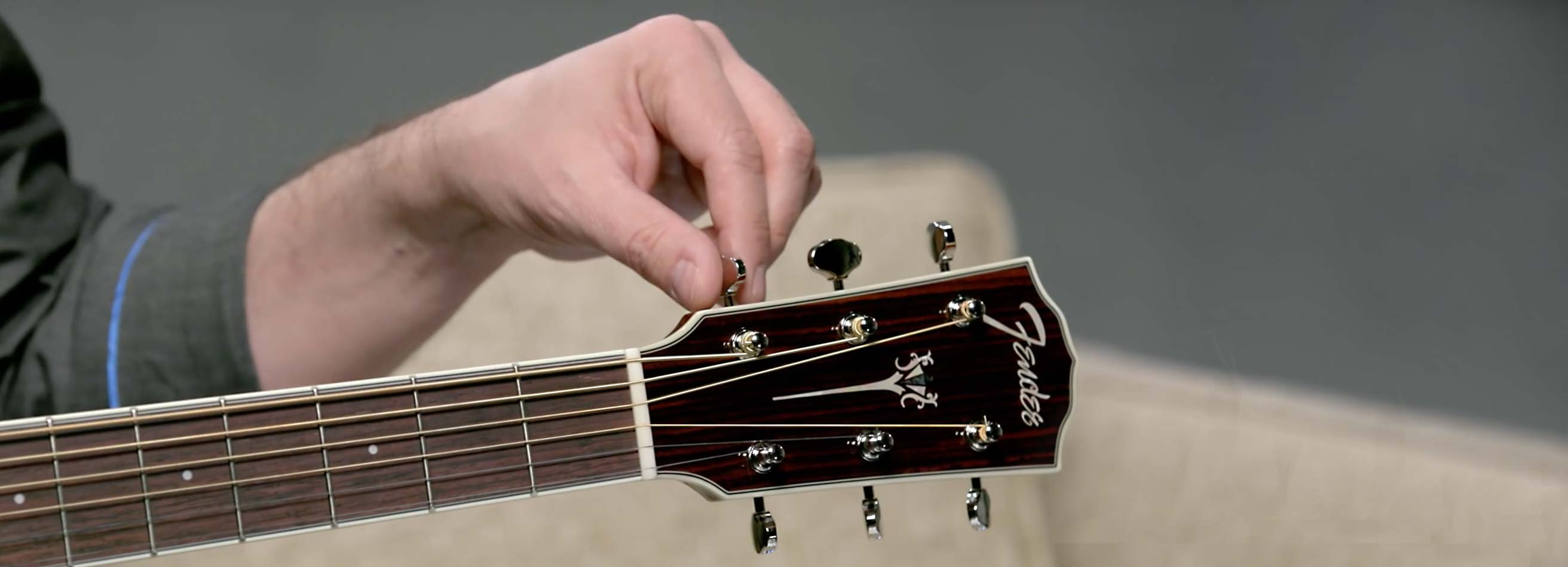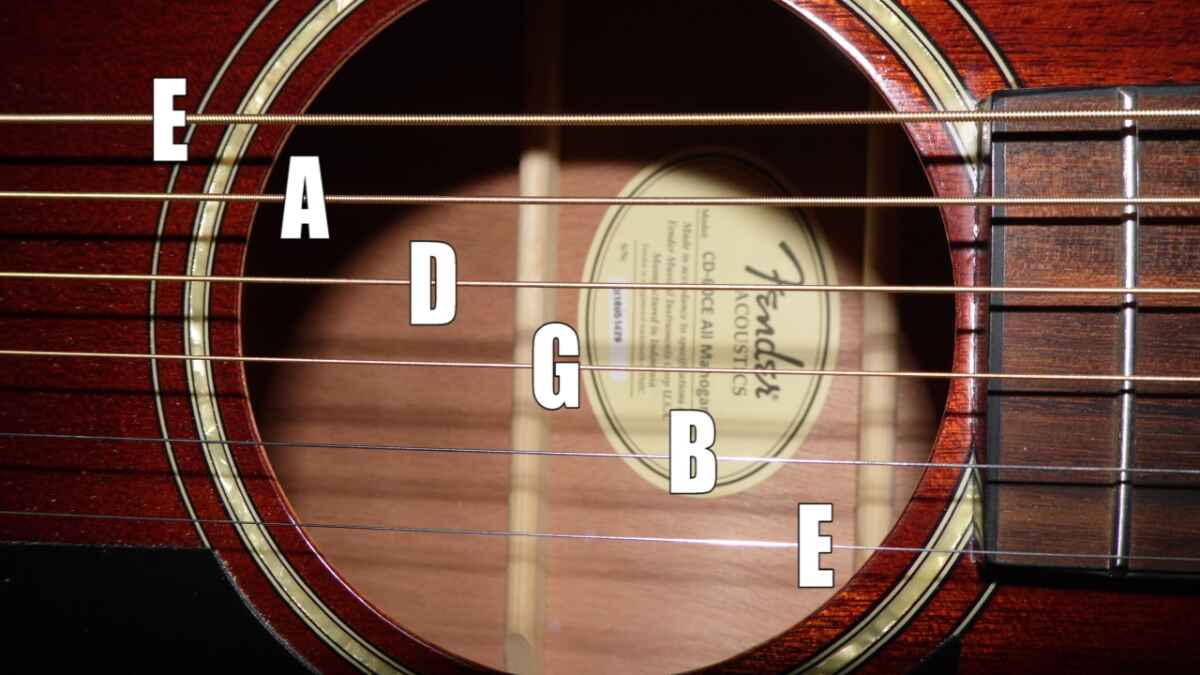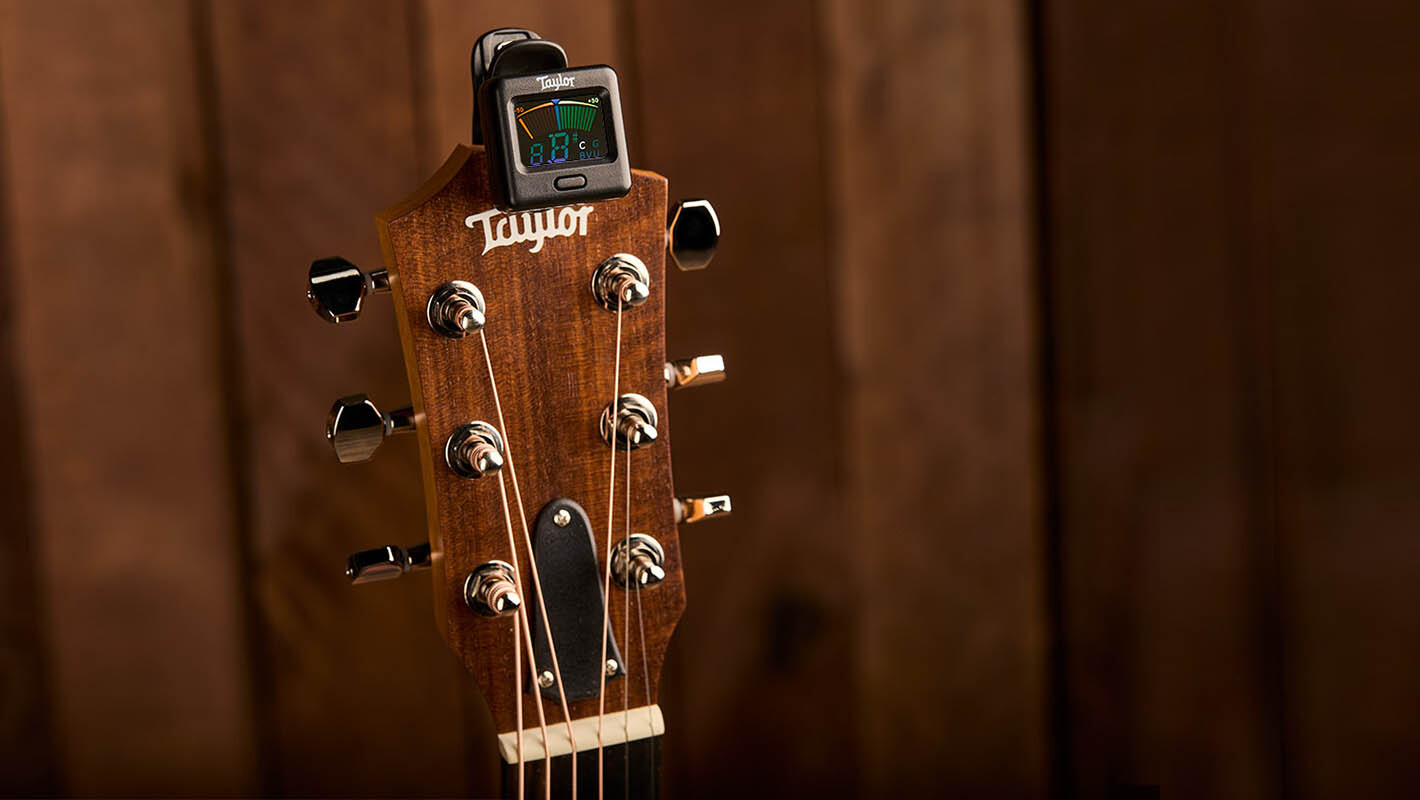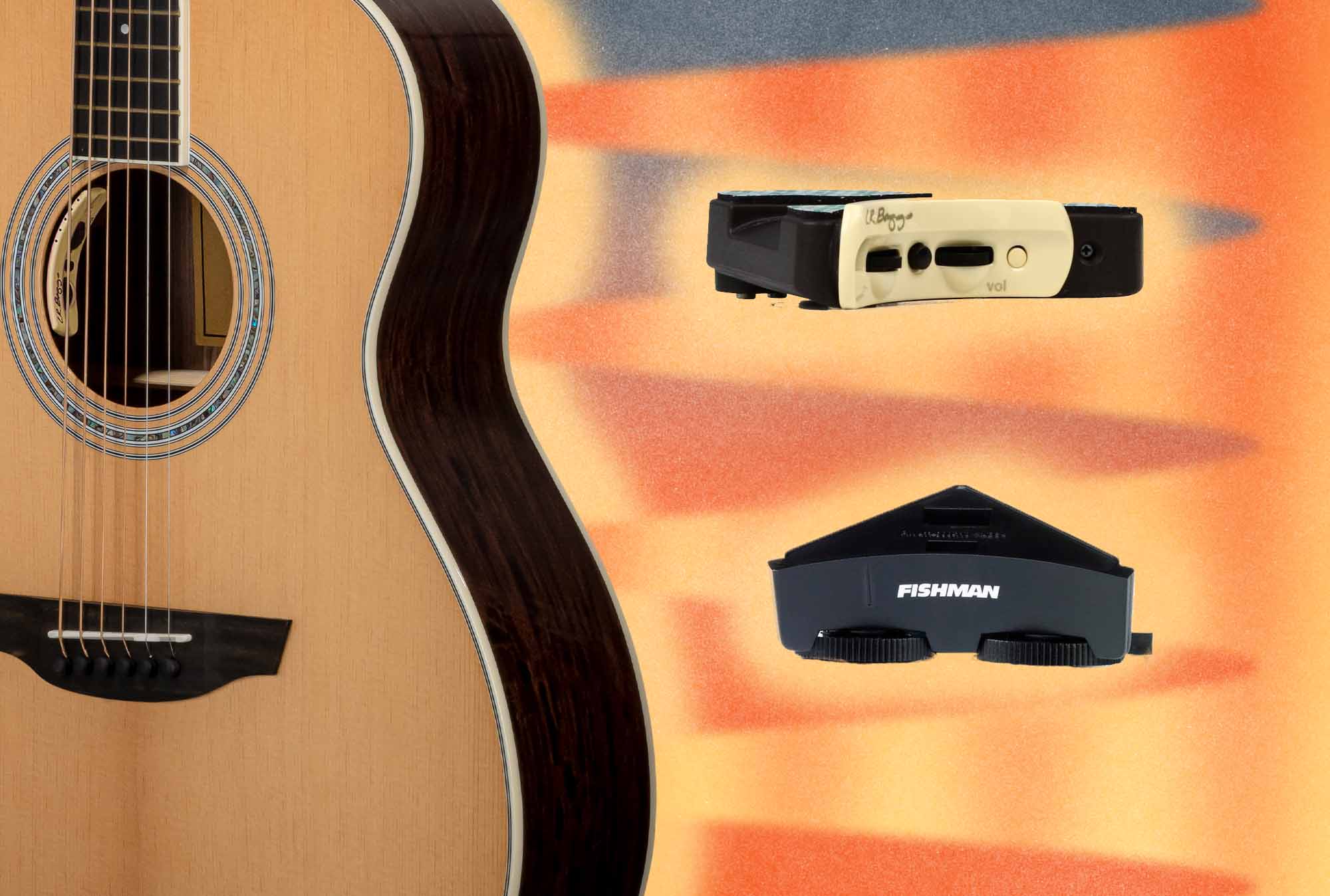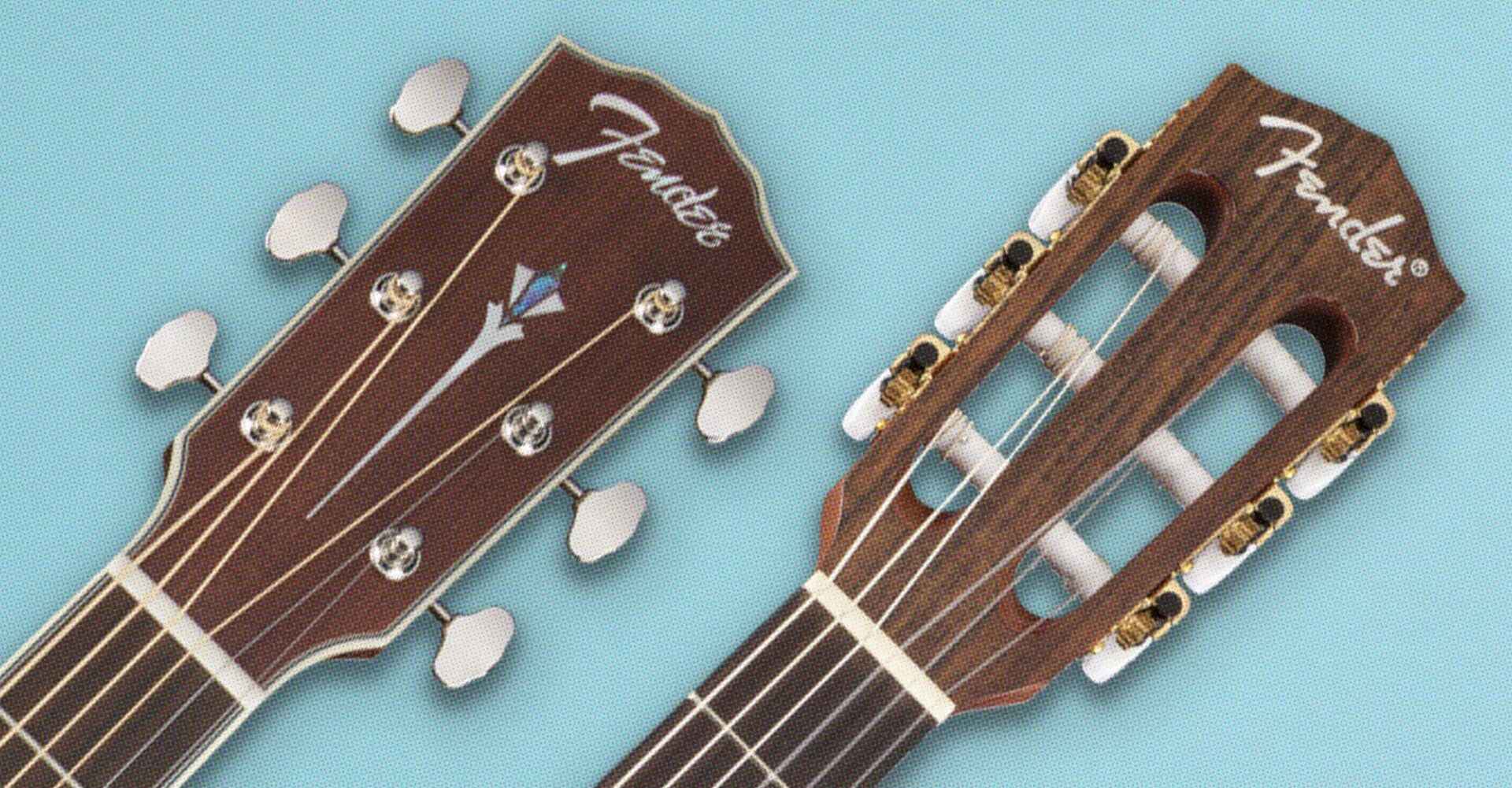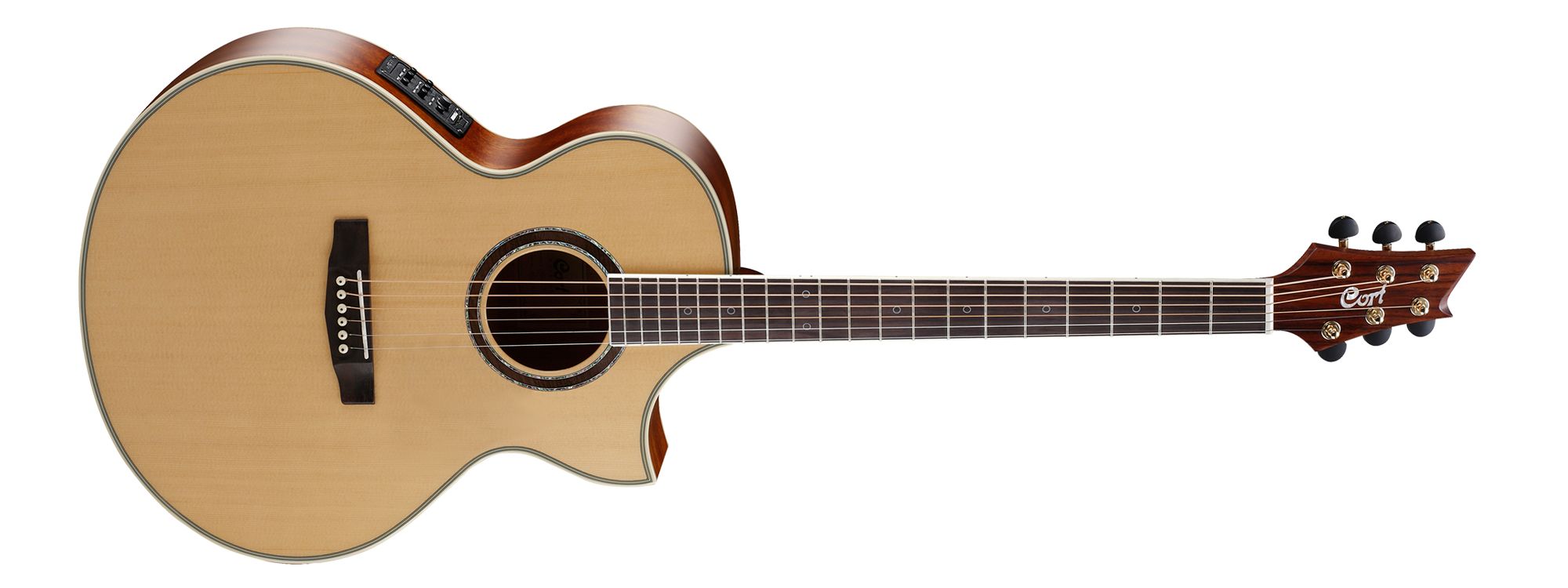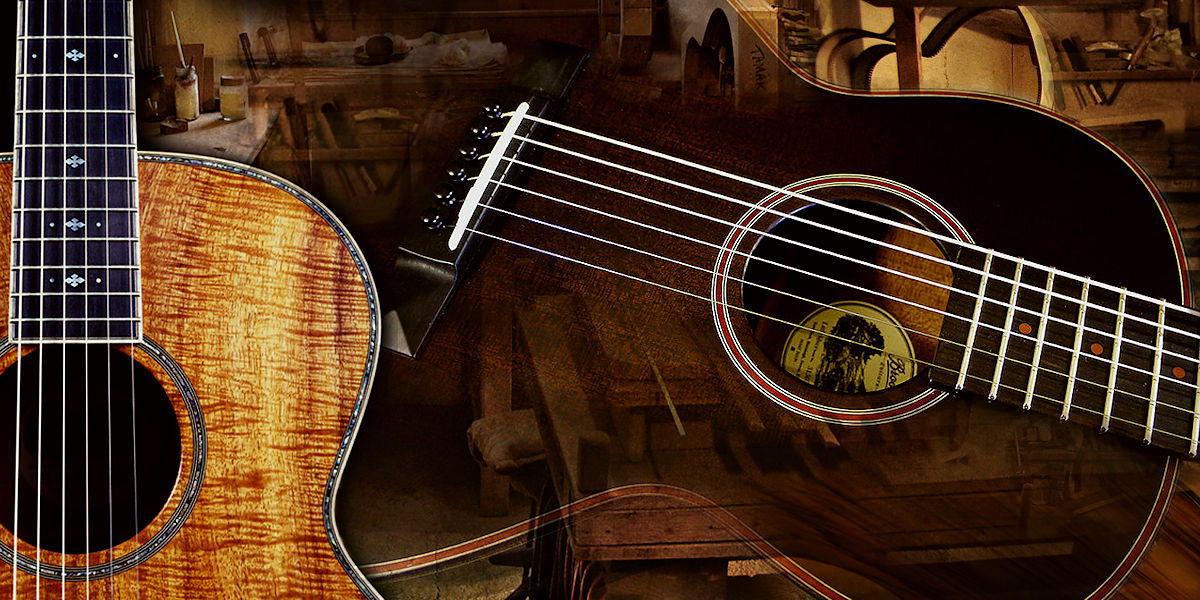Introduction
Tuning an acoustic guitar is essential for achieving the best sound and maintaining accurate pitch. Whether you’re a beginner or an experienced player, keeping your guitar properly tuned is crucial for enjoying your playing experience and creating harmonious music. In this article, we will explore various methods of tuning an acoustic guitar, catering to different preferences and access to different tools.
Having a well-tuned guitar not only enhances the quality of your playing but also allows you to play along with other instruments or record your music. With the right tuning, your guitar will produce the correct pitch for each string, ensuring that your chords and melodies sound in perfect harmony.
There are several types of tuners available to help you achieve accurate guitar tuning. Some of the common tuners include digital tuners, pitch pipes, smartphone apps, and even tuning by ear. Depending on your personal preference and the resources at your disposal, you can choose the method that works best for you.
In the following sections, we will explore each tuning method in detail, explaining its process and providing tips to help you achieve accurate tuning. Whether you have access to a piano, a digital tuner, or just your ears, we have got you covered!
So let’s dive in and explore the various methods of tuning an acoustic guitar, helping you unlock the true potential of your instrument and create beautiful, melodious music.
Types of Tuners
When it comes to tuning your acoustic guitar, there are several types of tuners available. Each type offers its own benefits and caters to different preferences. Let’s take a closer look at some popular types of tuners:
- Digital Tuners: Digital tuners are compact devices that use built-in microphones or input jacks to detect the pitch of your guitar strings. They display the pitch in a digital format, making it easy to see if each string is in tune. Digital tuners are highly accurate and widely used by musicians of all skill levels.
- Pitch Pipes: Pitch pipes are small devices that emit a specific pitch when blown into. The player matches the pitch of each string to the corresponding pipe sound. While not as precise as digital tuners, pitch pipes are portable and convenient for tuning on the go.
- Smartphone Apps: With the advancement of technology, there are numerous smartphone apps available that can accurately tune your guitar. These apps use the microphone on your smartphone to detect the pitch and provide visual feedback for tuning. They are convenient and readily accessible for most guitarists.
- Clip-On Tuners: Clip-on tuners attach directly to the headstock of your guitar and use vibrations to detect the pitch. They are easy to use, portable, and often have a display that indicates whether a string is in tune or needs adjustment.
- Standalone Tuners: Standalone tuners are larger devices that provide more advanced features and options for tuning. They often have built-in metronomes, multiple tuning modes, and larger displays for easier visibility. Standalone tuners are commonly used by professional musicians and in studio settings.
Each type of tuner has its own advantages, so choose the one that suits your needs and preferences. Whether you prefer a compact digital tuner or the simplicity of a pitch pipe, having a reliable tuner will ensure your guitar is always in tune and ready to be played.
Tuning with a Piano
One of the traditional methods of tuning an acoustic guitar is by using a piano. If you have access to a piano, you can easily tune your guitar by following these steps:
- Choose a Reference Note: Start by selecting a reference note on the piano. The most common choice is to use the A4 key, which is tuned to 440 Hz. You can use a piano tuner app or a tuning fork to ensure the reference note is accurate.
- Tune the Sixth String (Low E): Play the reference A4 note on the piano and adjust the sixth string on your guitar until it matches the pitch of the A4 note. You can use the tuning pegs on your guitar to raise or lower the pitch of the string.
- Tune the Remaining Strings: Once the sixth string is in tune, use it as a reference to tune the other strings. By playing the sixth string on the fifth fret, you can match the pitch to the open fifth string. Follow this process for each string, using the fifth fret of the previous string as a reference for the next one.
- Double-Check the Tuning: After tuning all the strings, go back and double-check each one to ensure accuracy. Listen for any changes in pitch and make any necessary adjustments using the tuning pegs.
Tuning your guitar with a piano can be a simple and effective method, especially if you have access to a well-tuned piano. However, it’s important to note that pianos can go out of tune too, so it’s a good practice to ensure the piano is in tune before using it as a reference for your guitar.
Remember, practice makes perfect, and the more you tune your guitar using a piano, the better you will become at matching pitches and achieving accurate tuning.
Tuning with a Digital Tuner
Using a digital tuner is one of the most convenient and accurate ways to tune an acoustic guitar. Digital tuners come in various shapes and sizes, but they all operate on the same principle of detecting the pitch of each string and providing visual feedback. Follow these steps to tune your guitar with a digital tuner:
- Attach the Tuner: Depending on the type of digital tuner you have, attach it to the headstock of your guitar or place it nearby where it can pick up the sound easily. Ensure it is securely attached and in a position where it can capture the vibrations of the strings.
- Select the Tuning Mode: Digital tuners have different tuning modes, such as chromatic mode or standard tuning mode. Choose the appropriate mode for your desired tuning. For standard tuning, select the mode that corresponds to EADGBE or the names of the strings.
- Play Each String: Pluck each string individually and check the display on the digital tuner. The tuner will show whether the string is too sharp (pitched too high), too flat (pitched too low), or in tune. Adjust the tuning pegs accordingly to bring the string into tune.
- Tune In Sequence: Start with the sixth string (low E) and tune it to the desired pitch indicated on the tuner. Move on to the fifth string (A), then the fourth string (D), and so on, until you reach the first string (high E).
- Verify the Tuning: Once you have tuned all the strings according to the digital tuner, go back and double-check each string. Play each string individually, listening carefully to ensure it matches the desired pitch. Make any necessary adjustments if a string is slightly off.
Using a digital tuner ensures precise tuning and allows for quick and accurate adjustments. The visual feedback provided by the tuner makes it easy for beginners to understand whether a string is in tune or needs to be adjusted. Digital tuners are portable, making them convenient for tuning on the go or during live performances.
Keep in mind that digital tuners rely on precise detection of pitch, so it’s important to pluck each string with enough force to produce a clear and sustained tone. This will help the tuner accurately analyze the pitch and provide accurate feedback for tuning.
Tuning with a Pitch Pipe
Using a pitch pipe is a simple and portable method for tuning an acoustic guitar. Pitch pipes are small devices that produce a specific pitch when blown into. While not as precise as digital tuners, pitch pipes are a convenient option, especially when you don’t have access to other tuning tools. Here’s how to tune your guitar with a pitch pipe:
- Familiarize Yourself with the Pitch Pipe: Each pipe on the pitch pipe is labeled with a specific note. Take a moment to familiarize yourself with the names and pitches of the pipes on your pitch pipe.
- Start with the Low E String: Begin by blowing into the pipe that corresponds to the low E string. Listen to the pitch and adjust the tuning peg for the low E string until it matches the pitch produced by the pitch pipe.
- Move to the A String: After tuning the low E string, blow into the pipe for the A string and adjust the tuning peg for the A string until it matches the pitch from the pitch pipe.
- Continue Tuning Each String: Repeat the process for each remaining string, moving from the D string to the G string, B string, and finally the high E string. Adjust each string’s tuning peg until it matches the corresponding pitch from the pitch pipe.
- Double-Check the Tuning: Once you have tuned all the strings, go back and double-check each string’s pitch. Play each string individually and listen carefully to ensure it matches the desired pitch. Make any necessary adjustments if a string sounds slightly off.
Using a pitch pipe is a straightforward and reliable way to tune your acoustic guitar. While it may take some practice to develop an ear for matching pitches, using a pitch pipe can help you train your ears and improve your ability to tune by ear in the future.
It’s worth noting that pitch pipes can sometimes produce a slightly different pitch compared to other tuning methods. Therefore, if you plan to play with other musicians or use recorded accompaniment, it’s beneficial to ensure your guitar is in tune with other instruments or reference pitches.
Tuning with a Smartphone App
In today’s digital age, smartphone apps have become a popular tool for various tasks, including guitar tuning. With the help of a smartphone app, you can easily tune your acoustic guitar using your mobile device. Here’s how to tune your guitar with a smartphone app:
- Select a Tuning App: Look for a reputable guitar tuning app in your device’s app store. There are numerous options available, both free and paid, offering different features and levels of accuracy. Read reviews and choose an app that suits your needs.
- Open the App and Set Up: Once you’ve installed the chosen app, open it and familiarize yourself with the interface. Many apps provide step-by-step instructions on how to use them effectively for guitar tuning. Follow the app’s setup process to ensure accurate tuning.
- Place Your Smartphone Near the Guitar: Position your smartphone close to the soundhole or near the headstock of your guitar. Ensure that the microphone of your device can capture the sound vibrations from the guitar strings clearly.
- Pluck Each String: Starting with the low E string, pluck each string individually while the app’s microphone is active. The app will analyze the pitch and display the tuning results. Follow the visual feedback in the app to adjust the tuning pegs for each string.
- Fine-Tune and Verify: After tuning all the strings according to the app’s instructions, play each string again to double-check the tuning. Listen closely to ensure that each string matches the desired pitch accurately. Make any necessary adjustments to the tuning pegs if a string is slightly off.
Tuning your guitar with a smartphone app offers convenience, portability, and accuracy. Apps often provide visual feedback that makes it easier for beginners to understand the tuning process. Additionally, many tuning apps also offer additional features like chord libraries, scales, and metronomes, enhancing your overall guitar playing experience.
Remember to use a reliable and accurate app for best results. The quality of your smartphone’s microphone can also impact the app’s ability to detect and analyze the sound, so it’s essential to use your judgment and make any necessary adjustments based on what you hear.
Tuning with Harmonics
Tuning with harmonics is a technique that allows you to tune your acoustic guitar by using harmonics produced at specific points along the strings. Harmonics are ringing tones that occur when you lightly touch the string at certain nodal points, producing a bell-like sound. This method is popular among more experienced guitarists who have developed an ear for detecting harmonics. Here’s how to tune your guitar using harmonics:
- Select a Reference String: Start by choosing a reference string, which is usually the low E string (sixth string). Ensure this string is in tune using another tuning method such as a digital tuner or piano.
- Play the 5th-Fret Harmonic: Lightly touch the string at the 5th fret without pressing it down fully. Pluck the string gently with your other hand while still touching the 5th fret. The resulting harmonic should produce a ringing tone.
- Tune the Open String to the 5th-Fret Harmonic: While the harmonic is still ringing, pluck the open string (the next string) and adjust the tuning peg until the harmonic sound matches the sound of the open string. This aligns the open string with the in-tune harmonic.
- Repeat for the Remaining Strings: Once you have tuned the next string to the 5th-fret harmonic, move on to the next string and repeat the process. Continue tuning each string using the harmonic from the previous string’s 5th fret until you reach the high E string.
- Double-Check the Tuning: After tuning all the strings using harmonics, play each string individually and listen carefully to ensure it matches the desired pitch. Make any necessary adjustments to the tuning pegs if a string sounds slightly off.
Tuning with harmonics may require a bit of practice and a good sense of hearing to discern when the harmonics align correctly. It’s important to take your time and train your ear to recognize the pitch accurately. Once mastered, this method can provide precise tuning and serve as a useful technique for ensuring your guitar is in tune.
Remember that harmonics are affected by various factors such as the quality of your guitar, the condition of the strings, and the player’s technique. It’s always a good practice to double-check the tuning using another method, such as a digital tuner or piano, to ensure complete accuracy.
Tuning with Another Instrument
If you don’t have access to a tuner, piano, or smartphone app, you can still tune your acoustic guitar using another instrument as a reference. While this method requires a bit of musical knowledge and a well-tuned instrument, it can be an effective way to achieve accurate tuning. Here’s how to tune your guitar using another instrument:
- Select a Well-Tuned Instrument: Choose an instrument that is in tune and has a reliable pitch reference, such as a keyboard, guitar, or even a well-tuned ukulele. Make sure the instrument is properly tuned before proceeding.
- Play a Reference Note: Play a reference note on the chosen instrument, ideally an A note. You can use a piano, guitar, or any other instrument that can produce a clear note. This reference note will be used as a guide to tune your acoustic guitar.
- Tune the Low E String: Play the reference A note on the chosen instrument and listen carefully. Adjust the tuning pegs of the low E string on your acoustic guitar until it matches the pitch of the A note. You can pluck the low E string on your guitar and compare it to the reference note to make adjustments.
- Tune the Remaining Strings: Once the low E string is in tune, use it as a reference to tune the rest of the strings. For example, play the 5th fret on the low E string and compare it to the open A string. Adjust the pegs of the A string until it matches the pitch of the 5th fret on the low E string. Follow this process for each remaining string.
- Double-Check the Tuning: After tuning all the strings using another instrument as a reference, play each string individually and listen carefully to ensure it matches the desired pitch. Make any necessary adjustments to the tuning pegs if a string sounds slightly off.
Tuning with another instrument can be a reliable method when you don’t have access to dedicated tuning tools. However, it’s important to use an instrument that is well-tuned and has a reliable pitch reference. Additionally, be mindful of the instrument’s temperament, as different instruments may have slight variations in pitch accuracy.
It’s always recommended to double-check the tuning using other methods, such as a digital tuner or a piano, if possible, to ensure maximum accuracy. Developing a good ear for detecting pitch differences will greatly assist you in tuning your guitar effectively with this method.
Tuning by Ear
Tuning your acoustic guitar by ear is a valuable skill that can help you become a more versatile musician. Although it requires a well-trained ear and some practice, tuning by ear allows you to achieve accurate tuning without relying on external tools. Here’s how to tune your guitar by ear:
- Understanding Standard Tuning: Familiarize yourself with the standard tuning of an acoustic guitar, which is EADGBE. Each letter represents the name of the open string when strummed without pressing any frets.
- Start with the Low E String: Begin by plucking the low E string (the thickest string) and listen to its pitch. Compare the sound to the reference E string from a well-tuned instrument or your own musical knowledge.
- Adjust the Pitch: If the low E string is flat (too low in pitch) or sharp (too high in pitch), turn the corresponding tuning peg to adjust the tension and bring the string to the correct pitch. Listen carefully as you make small adjustments until the low E string matches the reference pitch.
- Move to the A String: Once the low E string is in tune, press down the fifth fret of the low E string to produce the same pitch as the open A string. Compare the sounds of the two strings and adjust the tuning peg of the A string as necessary.
- Tune the Remaining Strings: Continue this process of comparing and adjusting the pitch with adjacent strings. For example, press the fifth fret of the A string to match the pitch of the open D string, and so on, until you reach the high E string.
- Double-Check the Tuning: After tuning all the strings, play each string individually and listen carefully to ensure it matches the desired pitch. If any string sounds slightly off, make small adjustments using the tuning pegs until the tuning is spot on.
Tuning by ear may take some time and practice to master. It requires a well-developed sense of pitch and the ability to discern slight variations in sound. Regular ear training and exposure to different pitch references will improve your accuracy in tuning by ear.
While tuning by ear may not be as precise as using electronic tuners or other tools, it allows you to develop a deeper connection with your instrument and enhances your overall musicality. It’s a valuable skill that will benefit you in various musical settings, such as jam sessions, live performances, and improvisation.
Conclusion
Tuning your acoustic guitar is a fundamental aspect of playing music, ensuring that your instrument produces accurate notes and harmonious sounds. Whether you choose to use a digital tuner, a piano, a pitch pipe, a smartphone app, harmonics, another instrument, or even your own ear, the goal remains the same – achieving precise tuning.
Each tuning method discussed in this article offers its own benefits and caters to different preferences and resources. Digital tuners provide convenience and accuracy, while using a piano offers a more traditional approach. Pitch pipes and smartphone apps provide portability, and tuning by harmonics or another instrument requires a well-trained ear and musical knowledge.
Whichever method you choose, it’s important to take the time to tune your guitar regularly. A properly tuned instrument not only enhances the quality of your playing, but also allows you to play harmoniously with other musicians, accurately transpose chords, and record your music with precision.
Remember, tuning is not a one-time task but an ongoing process. Factors such as temperature, humidity, and the tension on the strings can cause the guitar to go out of tune. Developing a good ear for pitch and regularly checking and adjusting your tuning will ensure your guitar sounds its best.
By developing your tuning skills and exploring different methods, you’ll become more confident in achieving accurate tuning. Whether you’re a beginner or an experienced guitarist, embracing the art of tuning will elevate your playing experience and unlock the full potential of your acoustic guitar.
So, grab your preferred tuning tool, trust your ears, and enjoy the harmonious sounds that a well-tuned acoustic guitar can produce!







